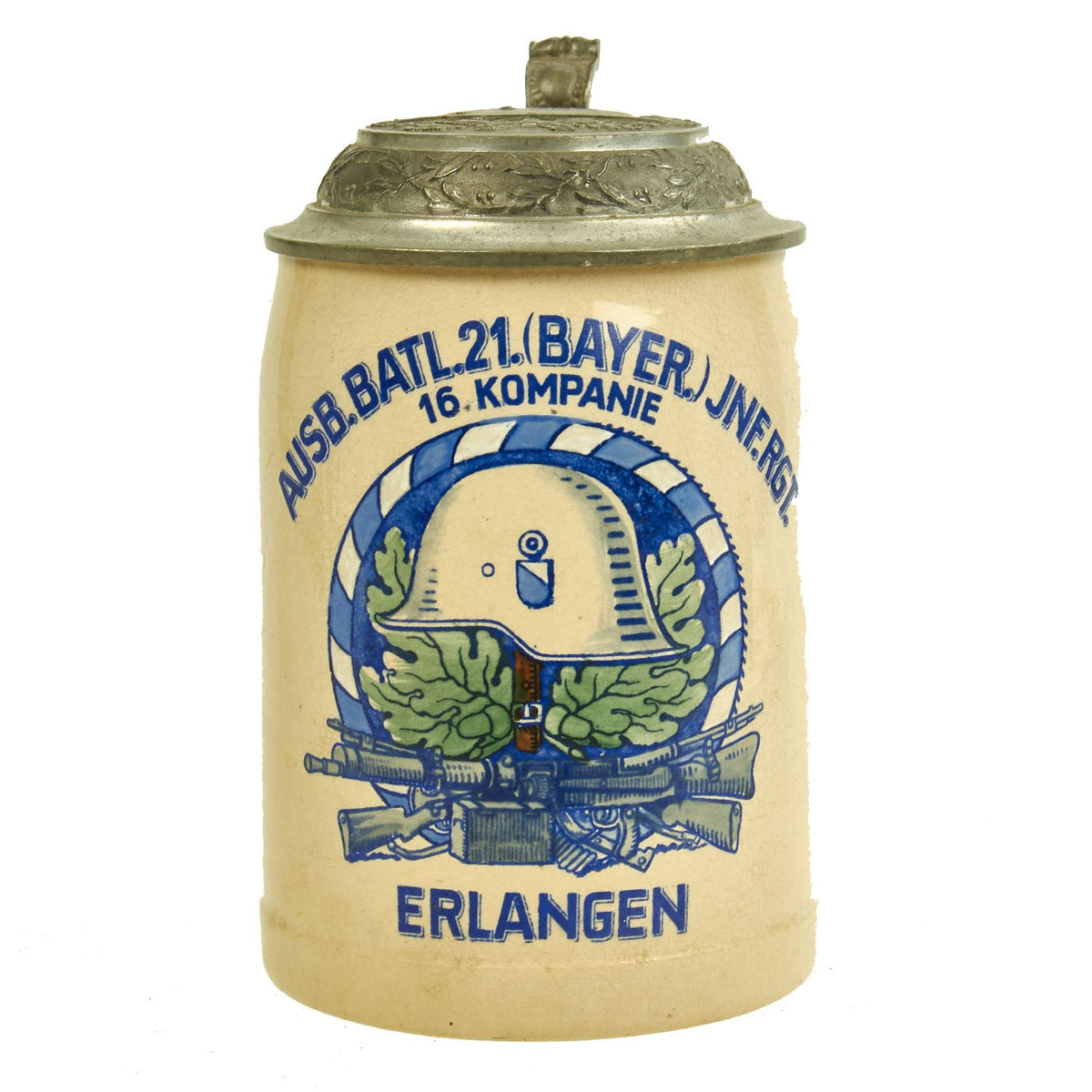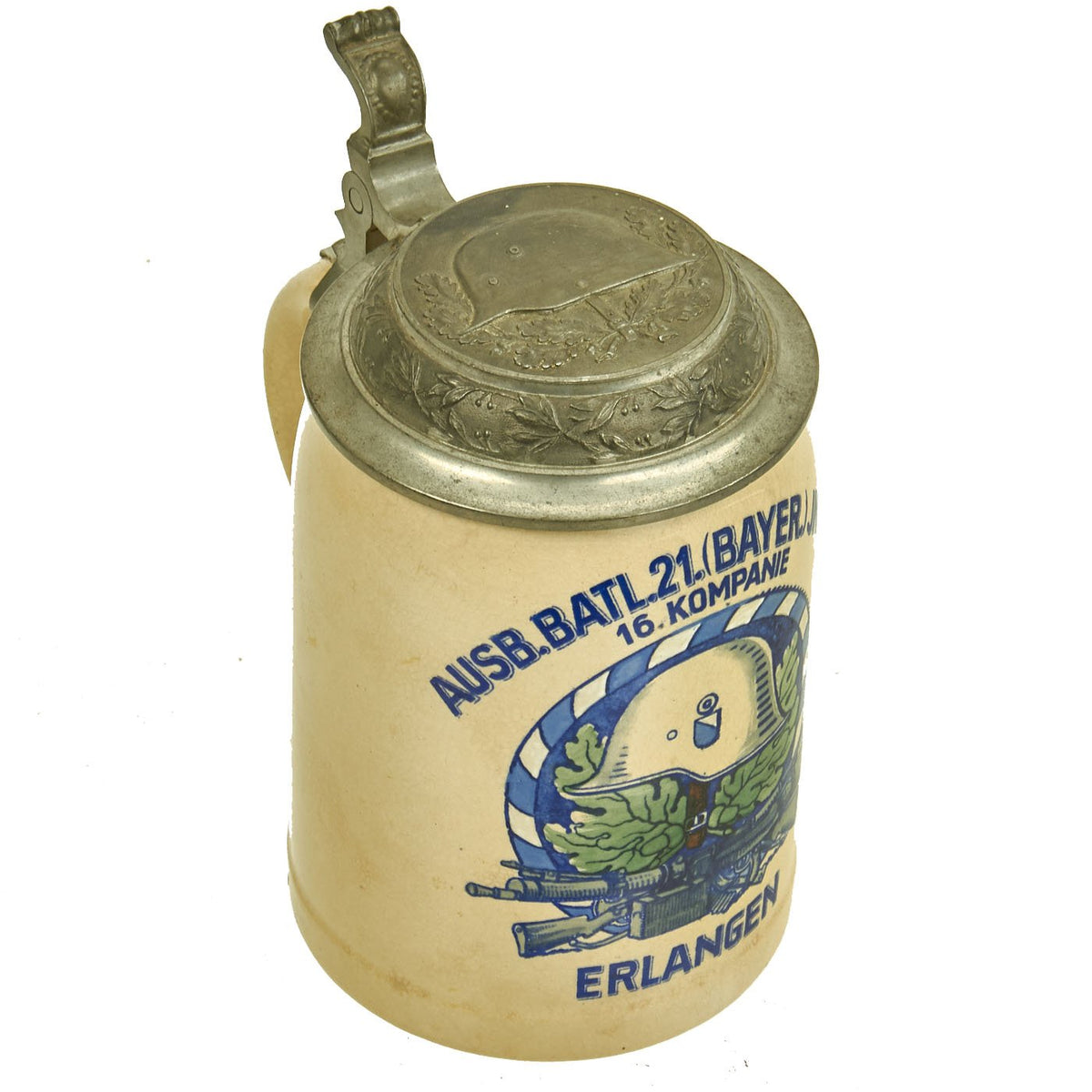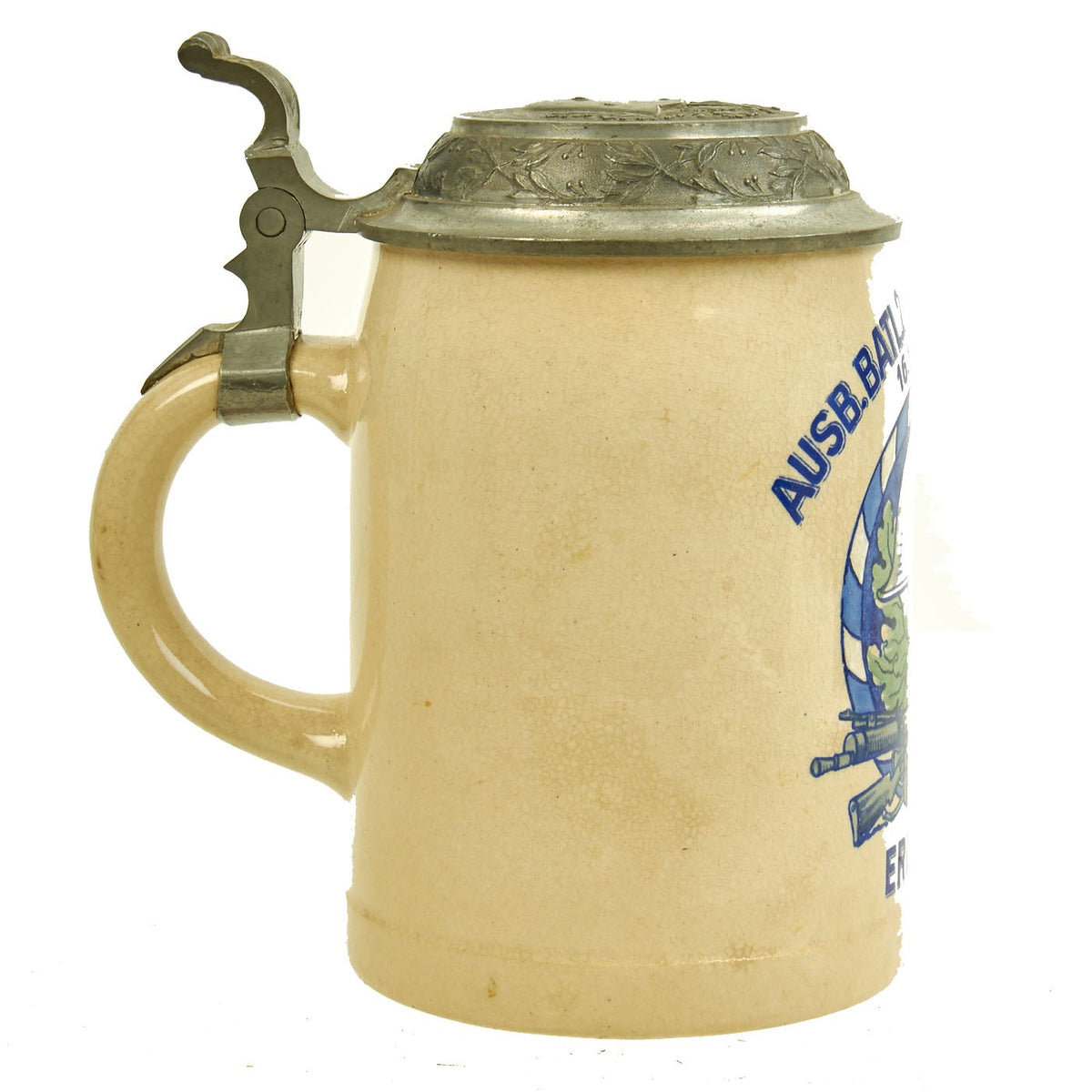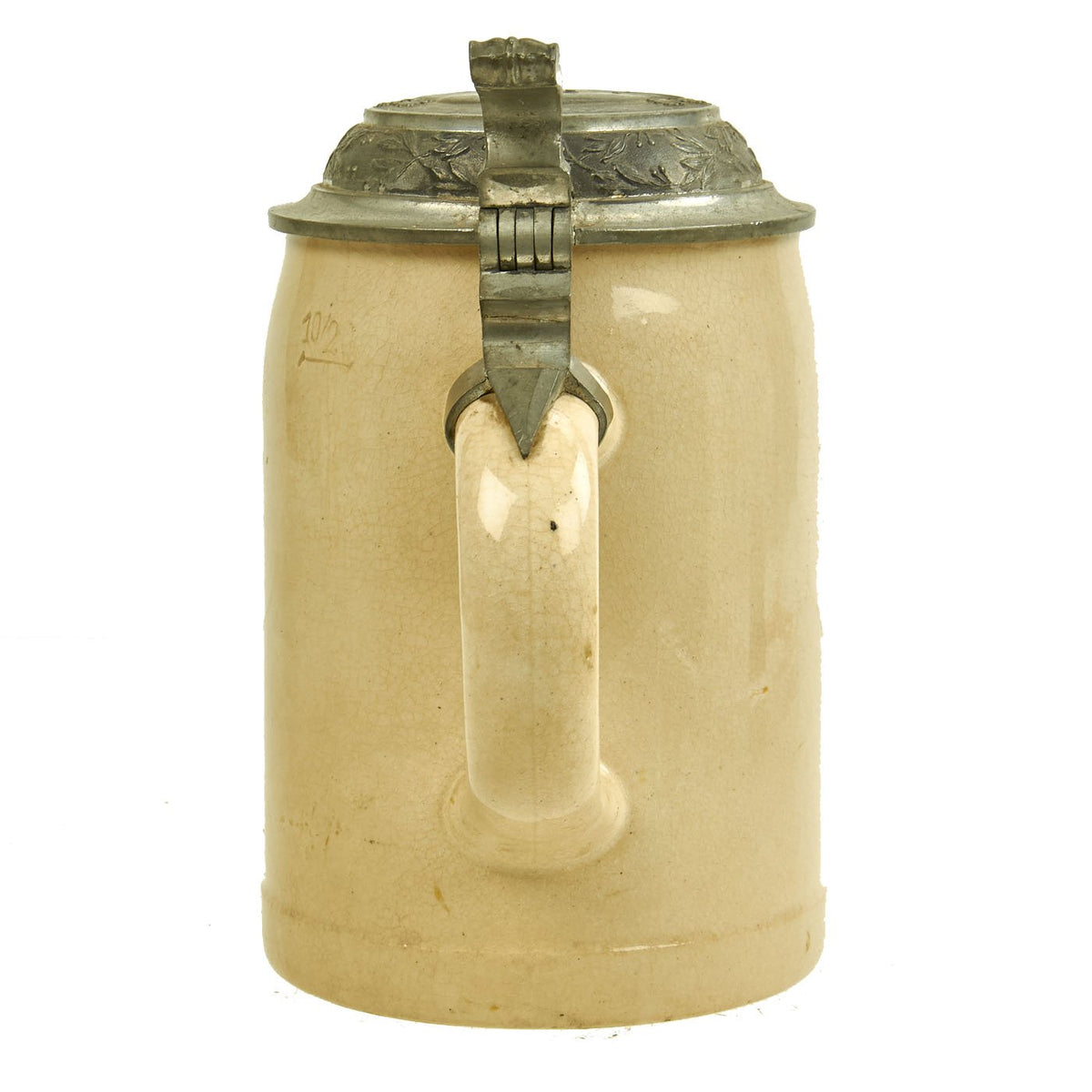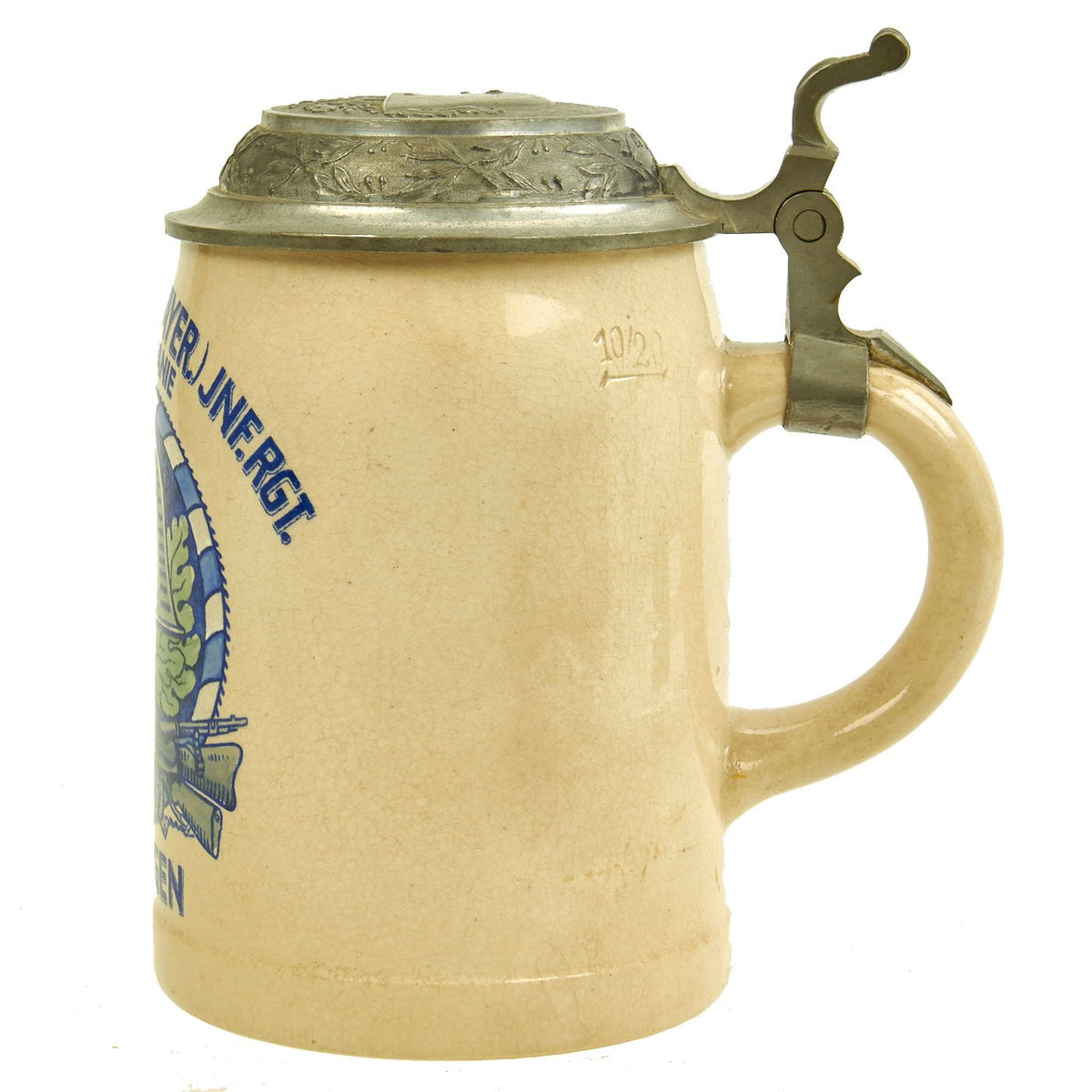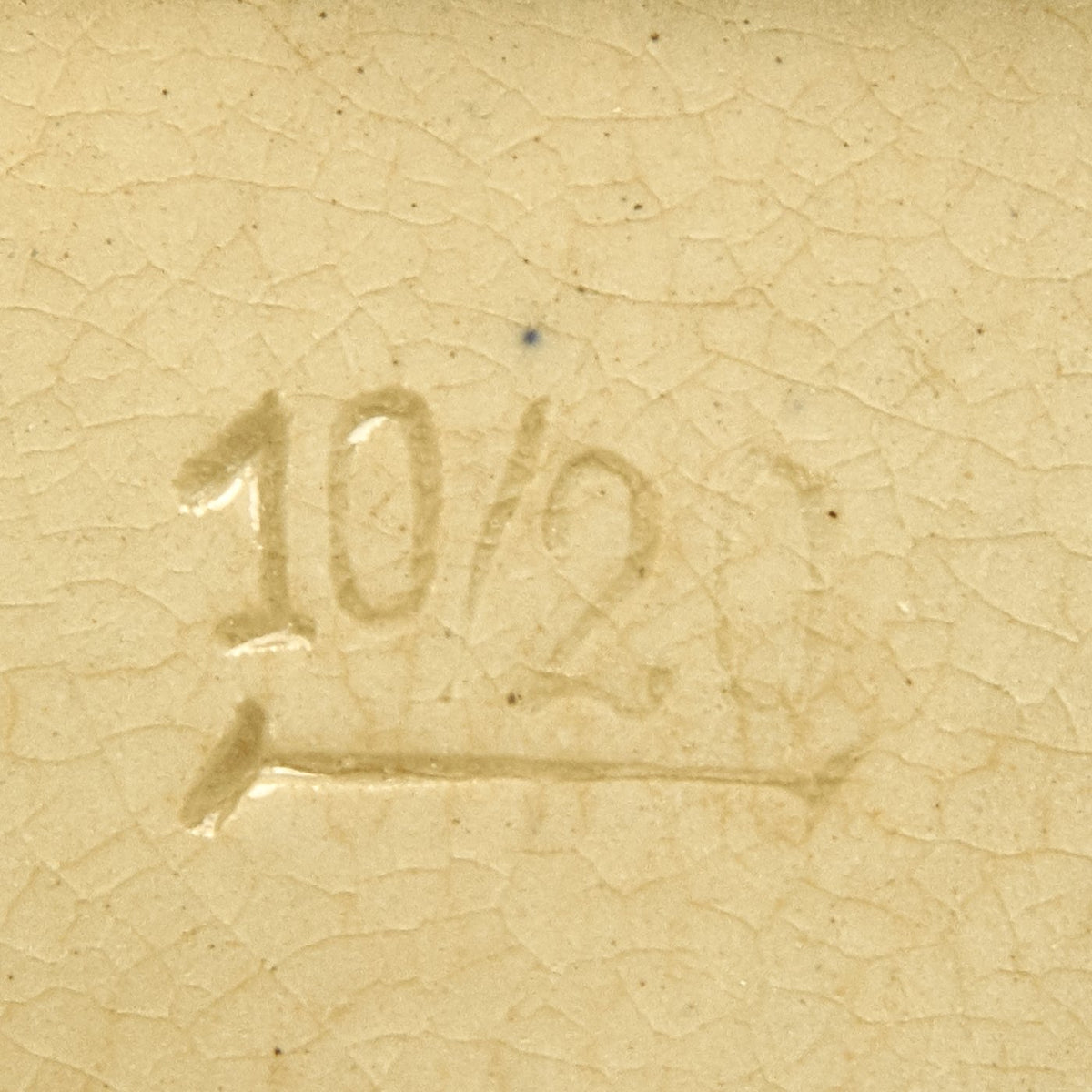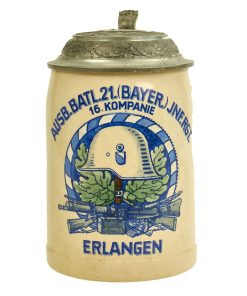Original German Inter War Reichswehr Bavarian Training Battalion Regimental Lidded Beer Stein Original Items
$ 395,00 $ 118,50
Original Item: Only One Available. Perhaps no other collectible is so shrouded in myth, misinformation and mistaken identity as German regimental steins. These pieces have been steadily reproduced since the 1960s and most experts agree reproductions far outnumber authentic examples. Yet few buyers other than stein specialists know how to identify the fakes.
The majority of authentic German regimental beer steins were produced between about 1890 and 1914. During this time, military service was compulsory in Germany. Most men would take basic training between 17 and 20 and then enter the reserves until age 40. A group of men would enter a unit together, stay in the same unit for training and be discharged as a unit. This sense of togetherness fostered the custom of buying souvenirs with the unit name, insignias and decorations as a keepsake of military service. Many souvenir items were available such as pipes, clocks, flasks and especially steins. Rosters of names from your unit, or regiment, could be added to the steins and these became known to collectors as “regimental steins.”
Authentic ca. 1890-1914 steins were available in pottery, porcelain, glass and metal. Regardless of what the stein was made of, almost all had pewter lids. The most common sizes are half-liter and one-liter. The beginning of WW I effectively ended the production of regimental steins as labor and materials were diverted to the war. After the War Ended, the much reduced German armed forces now had ample resources to produce steins, and production was restarted.
This is a very high quality original stein, named to an Inter War Reichsheer Training Battalion in the State of Bavaria. It has a lovely pewter lid, the top of which is decorated with the iconic German Stahlhelm (Steel helmet) design, surrounded by an oak leaf wreath on the top, and a laurel wreath on the sides of the lid. It is also maker marked on the underside of the lid in a circle:
G. WIFNINGER SEN.
MÜNCHEN 50.
The lid functions well, with a great hinge, and is not broken off, like so many german steins we see.
The side of the stein itself is quite colorful, and marked with a lovely regimental emblem, surrounded by the following text:
AUSB. BATL. 21. (BAYER.) JNF. RGT.
16. KOMPANIE
(EMBLEM)
ERLANGEN
This is the standard German military abbreviation for Ausbildungs-Bataillon 21. (Bayerisch) Infanterie Regiment, 16. Kompanie, which translates to the Training Battalion of the 21st (Bavarian) Infantry Regiment, 16th Company. This was a part of the newly formed Reichsheer of the Reichswehr.
In World War I, both Erlangen regiments, which were subordinated to the 5th Royal Bavarian Division, fought exclusively on the Western Front. Over 3,000 soldiers lost their lives. After the war Erlangen retained its status as a garrison town. Since the Treaty of Versailles stipulated a reduction of the army to 100,000 soldiers, only the training battalion of the 21st (Bavarian) Infantry Regiment of the newly founded Reichswehr remained in the city.
The Design of the emblem shows a typical German Stahlhelm (Steel helmet) with the Bavarian State colors decal, over a Maxim 08/15 and Mauser GEW98. There are oak leaves and acorns in the background, along with a lovely blue and white border, again the Bavarian State colors. The side of the Stein is stamped 10/20, which may indicate that it was the 10th out of 20 produced for the battalion. The stein looks to be a half liter, and measures 6 inches tall and 3 3/4 inches wide.
The stein really is quite lovely, and also in great shape, with lovely checking in the clear glaze, and a great lid. A very nice Genuine German Beer Stein from the Post WWI Period. Ready to display!
The Weimar Republic (German: Weimarer Republik), officially the German Reich (Deutsches Reich), also referred to as the German People’s State (Deutscher Volksstaat) or simply the German Republic (Deutsche Republik), was the German state from 1918 to 1933. As a term, it is an unofficial historical designation that derives its name from the city of Weimar, where its constitutional assembly first took place. The official name of the republic remained the German Reich as it had been during the German Empire because of the German tradition of substates.
Although commonly translated as “German Empire,” Reich here better translates as “realm” in that the term does not necessarily have monarchical connotations in itself. The Reich was changed from a constitutional monarchy into a republic. In English, the country was usually known simply as Germany, and the Weimar Republic name became mainstream only in the 1930s.
The Reichswehr (English: Realm Defense) formed the military organization of Germany from 1919 until 1935, when it was united with the new Wehrmacht (Defense Force). At the end of World War I, the forces of the German Empire were disbanded, the men returning home individually or in small groups. Many of them joined the Freikorps (Free Corps), a collection of volunteer paramilitary units that were involved in suppressing the German Revolution and border clashes between 1918 and 1923.
The Reichswehr was limited to a standing army (Reichsheer) of 100,000 men, and a navy (Reichsmarine) of 15,000. The establishment of a general staff was prohibited. Heavy weapons such as artillery above the caliber of 105 mm (for naval guns, above 205 mm), armored vehicles, submarines and capital ships were forbidden, as were aircraft of any kind. Compliance with these restrictions was monitored until 1927 by the Military Inter-Allied Commission of Control.
Fast Shipping with Professional Packaging
Thanks to our longstanding association with UPS FedEx DHL, and other major international carriers, we are able to provide a range of shipping options. Our warehouse staff is expertly trained and will wrap your products according to our exact and precise specifications. Prior to shipping, your goods will be thoroughly examined and securely secured. We ship to thousands clients each day across multiple countries. This shows how we're dedicated to be the largest retailer on the internet. Warehouses and distribution centres can be located throughout Europe as well as the USA.
Note: Orders with more than one item will be assigned a processing date depending on the item.
Before shipping before shipping, we'll conduct a thorough inspection of the items you have ordered. Today, the majority of orders will be delivered within 48 hours. The delivery time will be between 3-7 days.
Returns
The stock is dynamic and we cannot completely manage it because multiple stakeholders are involved, including our factory and warehouse. So the actual stock may alter at any time. It's possible that you may not receive your order once the order has been made.
Our policy is valid for a period of 30 days. If you don't receive the product within 30 days, we are not able to issue a refund or an exchange.
You can only return an item if it is unused and in the same state as the day you received it. You must have the item in its original packaging.
Related products
Uncategorized
Uncategorized
Uncategorized
Uncategorized
Uncategorized
Uncategorized
Uncategorized
Armored Burgonet Helmet & Polearm from Scottish Castle Leith Hall Circa 1700 Original Items
Uncategorized
Uncategorized
Uncategorized
Uncategorized
Uncategorized
Armoured Fighting Vehicles of the World: AFVs of World War One (Hardcover Book) New Made Items
Uncategorized
Uncategorized
Uncategorized
Uncategorized
Australian WWII Owen MK1 Machine Carbine SMG Custom Fabricated Replica with Sling Original Items
Uncategorized
Angolan Rebel 1970s era 60mm Inert Display Mortar from Angolan Civil War Original Items
Uncategorized
Uncategorized
Band of Brothers ORIGINAL GERMAN WWII Le. F.H. 18 10.5cm ARTILLERY PIECE Original Items
